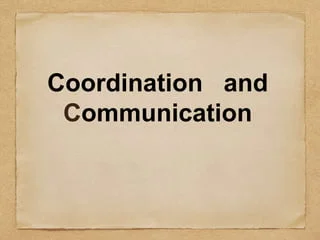Learn how this coordinated approach enhances communication, collaboration, and decision-making among multiple agencies, ensuring a more effective response effort.
The benefit of Unified Command is improved coordination, collaboration, and streamlined decision-making among various agencies and organizations involved in emergency response efforts.
In this article, we explore the advantages of Unified Command, shedding light on its pivotal role in shaping effective emergency response tactics.
What is Unified Command? – Try Unified Command Now For A Safer Future!
Unified Command represents a paradigm shift in emergency management, offering a structured approach to coordinating multi-agency responses to complex incidents.
At its core, Unified Command embodies the principles of collaboration, communication, and shared responsibility, providing a framework for seamless integration and decision-making among diverse stakeholders.
This approach enhances emergency response efforts’ efficiency, effectiveness, and overall resilience by bringing together agencies, jurisdictions, and organizations under a unified structure.
Enhanced Coordination And Communication – Take Charge Of Your Emergency Response Strategy Today!

Improved coordination and communication are critical benefits of using Unified Command in emergencies.
When multiple agencies and organizations come together under one umbrella, sharing information and making decisions becomes more manageable. This means everyone knows what’s happening and can work together more effectively.
In simple terms, Unified Command helps avoid confusion by ensuring everyone is on the same page. Instead of each agency doing its own thing, they all work together as a team.
This way, important information like updates on the situation or requests for help can be quickly communicated to everyone who needs to know.
By improving coordination and communication, Unified Command helps emergency responders make better decisions and use their resources more efficiently.
This ultimately leads to a faster and more effective response, crucial in keeping people safe during emergencies.
Optimized Resource Utilization – Improving Coordination And Making Decisions Easier!
Optimized resource utilization is a key advantage of Unified Command in emergency management.
When different agencies come together under a unified structure, they can effectively pool their resources—such as personnel, equipment, and supplies—to ensure they’re used where they’re most needed.
This prevents duplication of efforts and helps prioritize the allocation of resources based on the severity and urgency of the situation.
By coordinating resources this way, Unified Command maximizes efficiency and enhances the overall effectiveness of response efforts, ultimately leading to better outcomes for those affected by the emergency.
Unified Decision-Making – Unlock The Potential Of Unified Decision-Making!
Cooperative decision-making is crucial to the Unified Command approach in emergency management.
It means that all the different agencies and organizations involved in responding to an emergency come together to make decisions as one unified team.
Instead of each agency making decisions separately, they analyze the situation, consider everyone’s input, and agree on the best course of action.
This helps ensure everyone is on the same page, avoids confusion or conflicting orders, and allows quicker and more effective responses to emergencies.
Unified decision-making ultimately leads to better coordination, more transparent communication, and more efficient use of resources during crises.
Improved Incident Management – Let’s Master Emergencies Together!

- Clear Roles And Responsibilities:
Unified command clarifies who is in charge of what during an emergency, reducing confusion and ensuring tasks are delegated effectively.
- Efficient Resource Allocation:
With a unified approach, personnel, equipment, and supplies are allocated based on priority needs, maximizing their effectiveness in managing the incident.
- Streamlined Communication:
Unified command establishes clear communication channels, allowing for swift exchange of information among responders, leading to quicker decision-making and response actions.
- Consistent Decision-Making:
By bringing together representatives from different agencies, unified command promotes consensus-driven decision-making, ensuring that actions taken are in the best interest of managing the incident.
- Enhanced Adaptability:
Unified command fosters flexibility and adaptability in responding to circumstances during an incident, allowing responders to adjust strategies and tactics for optimal incident management.
Strengthened Interagency Collaboration – Unite For Stronger Responses!
Strengthened interagency collaboration is a crucial advantage of unified command in emergency management.
When different agencies and organizations come together under one suitable structure, they can work more closely, breaking down barriers and sharing resources effectively.
This collaboration helps them to understand each other’s roles better, build trust, and coordinate efforts seamlessly, leading to a more efficient and comprehensive response to emergencies.
In essence, unified command promotes teamwork among various responders, ensuring they can leverage each other’s strengths and expertise to address the challenges of any crisis.
Enhanced Public Confidence – Boost Trust And Reassure Your Community!

Unified Command is crucial in boosting public confidence during emergencies. When people see various agencies and organizations working together under a unified structure, it reassures them that the situation is handled efficiently and effectively.
This visible demonstration of coordination and cooperation helps instill trust in the community, making them feel more secure and confident in the response efforts.
Additionally, knowing that competent professionals are leading the response with clear roles and accountability further enhances public trust, ensuring that individuals feel supported and informed throughout the crisis.
Conclusion:
The benefit of Unified Command lies in its ability to facilitate improved coordination, foster collaboration, and ensure streamlined decision-making among multiple agencies and organizations involved in emergency response efforts.
FAQs:
1. How does Unified Command benefit emergency response?
Unified Command enhances responders’ coordination, communication, and decision-making, leading to more efficient and effective emergency management.
2. Why is public confidence necessary during emergencies?
Public confidence is crucial because it fosters trust in the response efforts, encourages cooperation, and reduces panic or misinformation in the community.
3. How does Unified Command enhance public confidence?
Unified Command boosts public confidence by showcasing a visible framework of cooperation and coordination among responding agencies, reassuring the community that the situation is under control.
4. What role does leadership play in Unified Command?
Leadership within Unified Command provides clear direction, fosters collaboration, and ensures accountability, all of which are essential for maintaining public trust and confidence.
5. How does Unified Command improve communication with the public?
Unified Command establishes clear communication channels with the public, providing timely updates, instructions, and reassurances, thereby keeping the community informed and engaged.
6. Can Unified Command be applied to various types of emergencies?
Yes, Unified Command is flexible and adaptable, making it suitable for managing various emergencies, including natural disasters, public health crises, and large-scale accidents.
Read:
